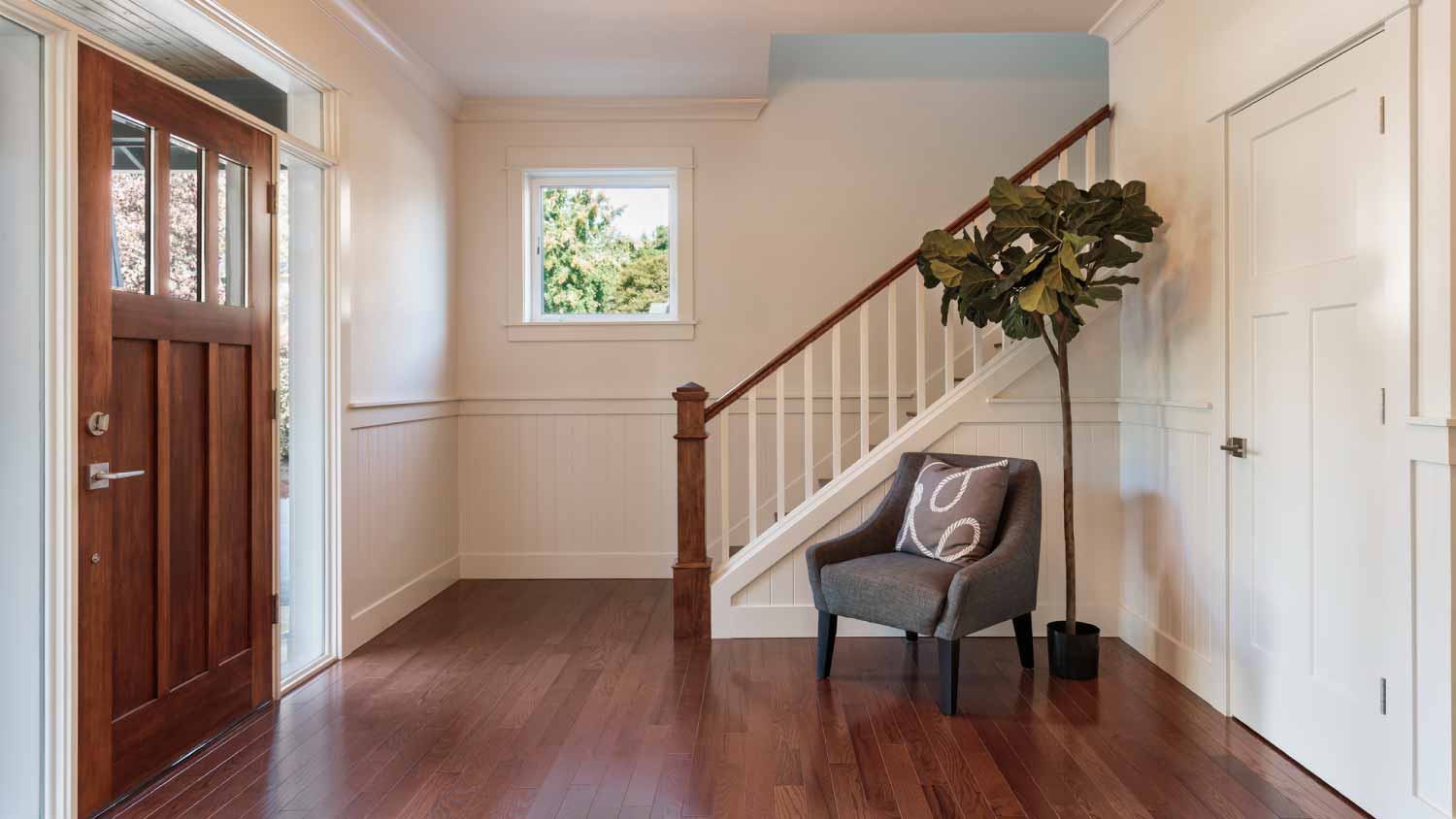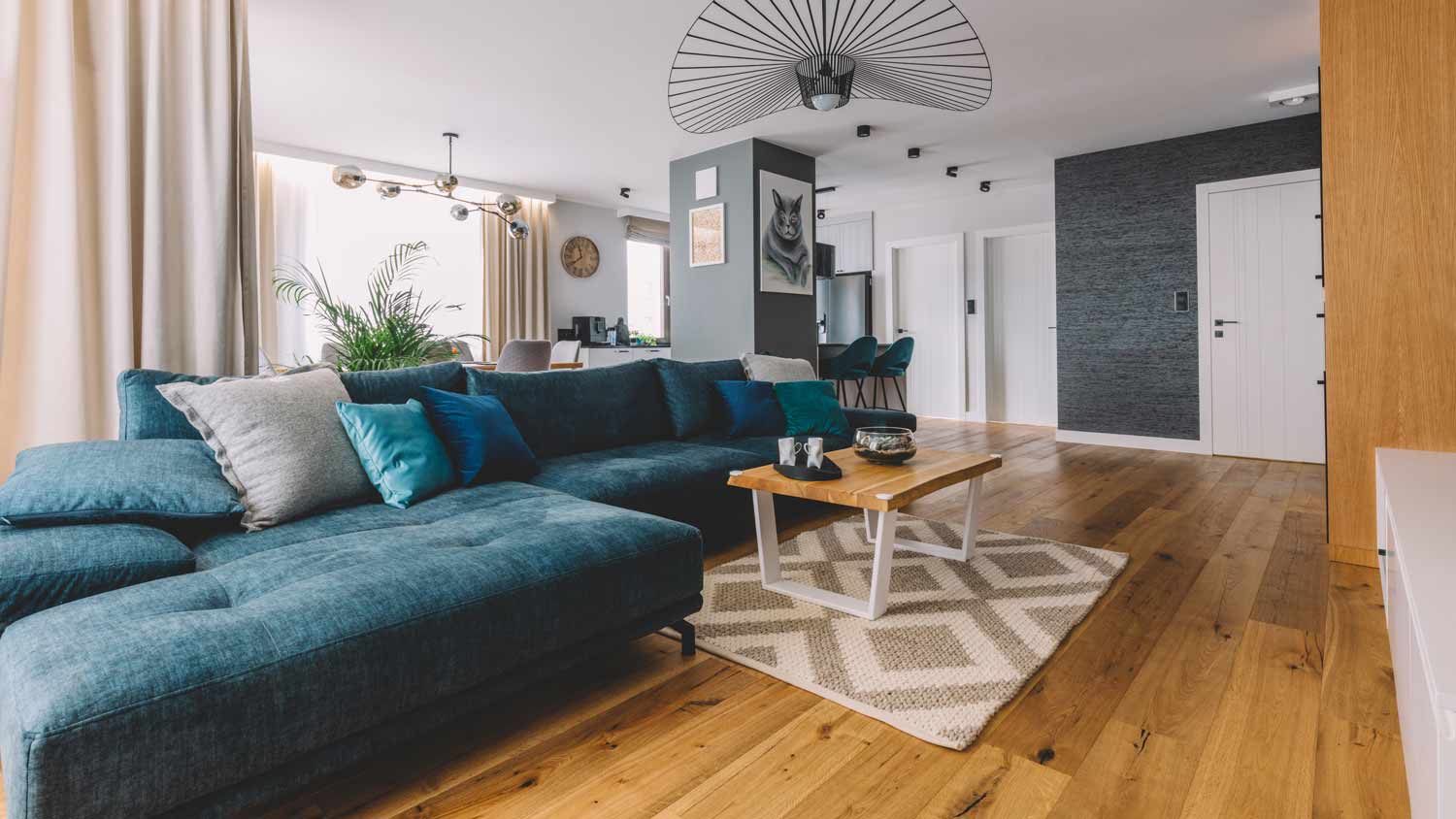The Easiest Flooring to Install: 5 Types and When to Choose Each
Lay the groundwork for a beautiful home


Installing your own flooring saves money and gives you the pride and satisfaction of doing the job yourself. However, not all flooring types are DIY-friendly, especially in trickier spaces like bathrooms and kitchens. Here's a breakdown of the easiest flooring to install, the pros and cons, costs, and when to choose each.
| Type of Flooring | Average Cost (per Square Foot) |
|---|---|
| Luxury Vinyl Plank | $3–$10 |
| Luxury Vinyl Tile | $2–$10 |
| Laminate Plank | $3–$13 |
| Cork | $3–$10.50 |
| Carpet Tiles | $1.50–$3.50 |
1. Luxury Vinyl Plank
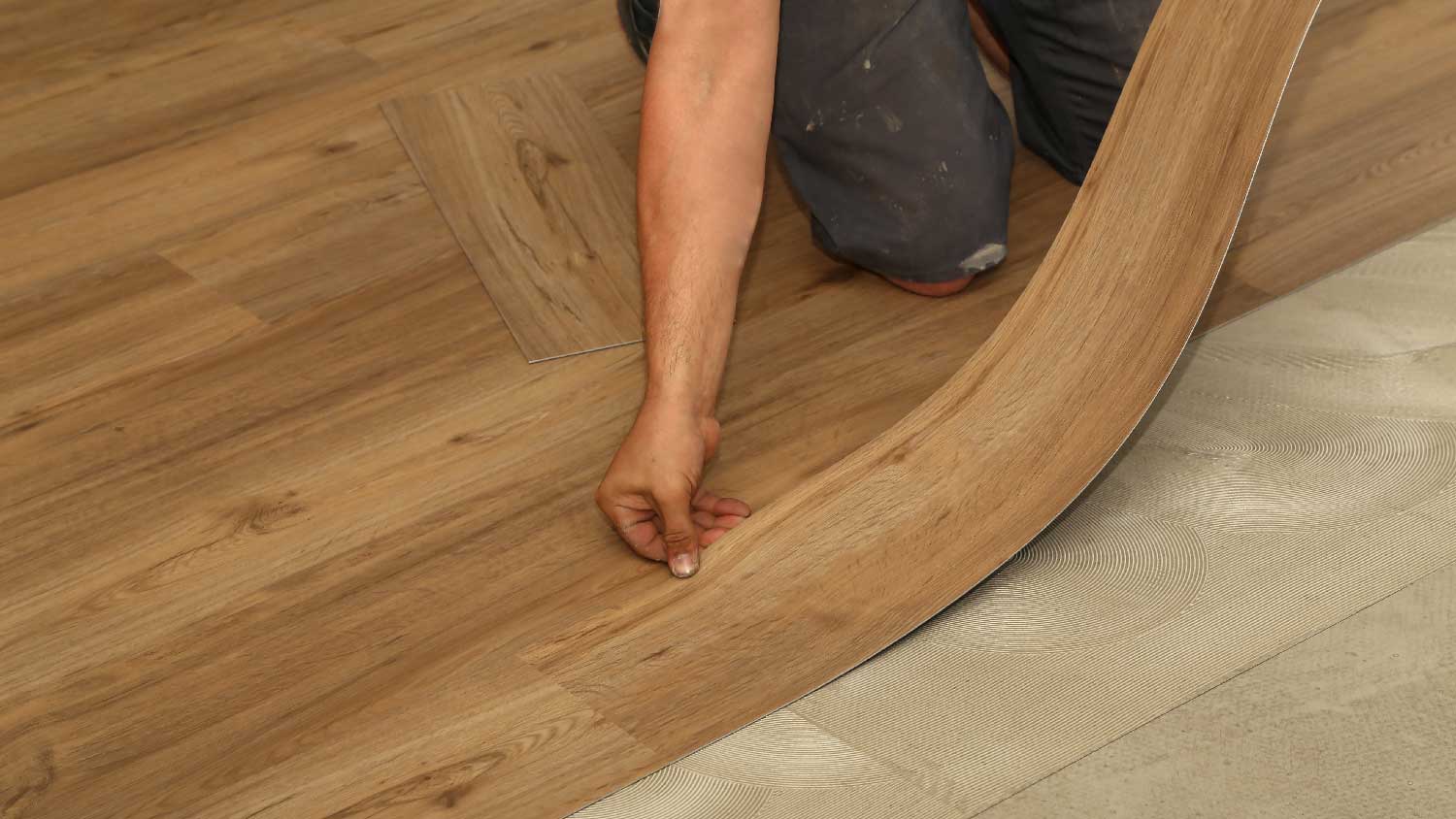
Luxury vinyl plank (LVP) flooring is the easiest and fastest flooring to install, as long as you follow the manufacturer's installation instructions. LVP is vinyl flooring that resembles wood and comes in planks instead of large sheets. You can install LVP in three main ways: peel and stick, click-together, or loose lay with adhesive. You only need a few tools for the job, such as a utility knife and a level. LVP is durable, easy to clean, stain-resistant, and waterproof. Luxury vinyl flooring costs $3 to $10 per square foot, depending on the style and quality.
| Pros | Cons |
|---|---|
| Easy to install with minimal tools | Hard to get right in a huge room |
| Resembles hardwood without the cost | Requires level subflooring |
| Durable, long-lasting, and easy to clean | Doesn't offer the same feel as hardwood |
| Comes in a variety of colors and styles |
Best for: Almost every room and home style
LVP is the easiest and fastest flooring to install, assuming all the manufacturer’s installation specifications are followed without exception.
2. Luxury Vinyl Tile
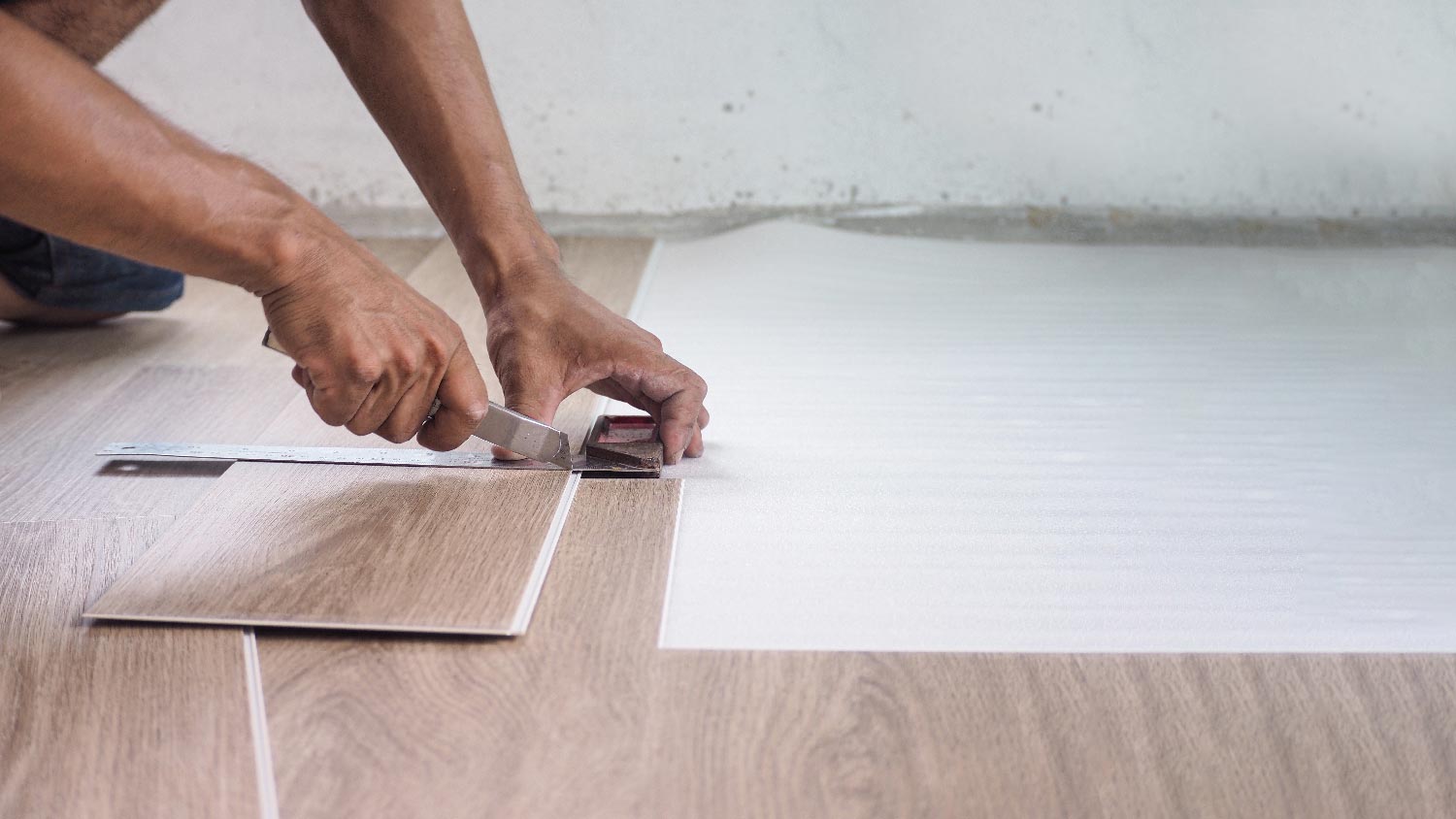
Luxury vinyl tile (LVT) flooring is similar to LVP but mimics stone or ceramic tiles. You can install LVT with click-together planks or peel-and-stick tiles. You need minimal tools for installation, such as a speed square and seam roller. The tile appearance is ideal for a bathroom, kitchen, or laundry room. LVT costs $2 to $10 per square foot, depending on the style and quality.
| Pros | Cons |
|---|---|
| Easy to install with a few tools | Requires level subflooring |
| Resembles stone or ceramic | Requires precision cuts around fixtures such as toilets |
| Available in many colors and styles | Not as environmentally-friendly as tile or stone |
| Durable and water-resistant |
Best for: Bathrooms, kitchens, laundry rooms, and mudrooms
3. Laminate Plank
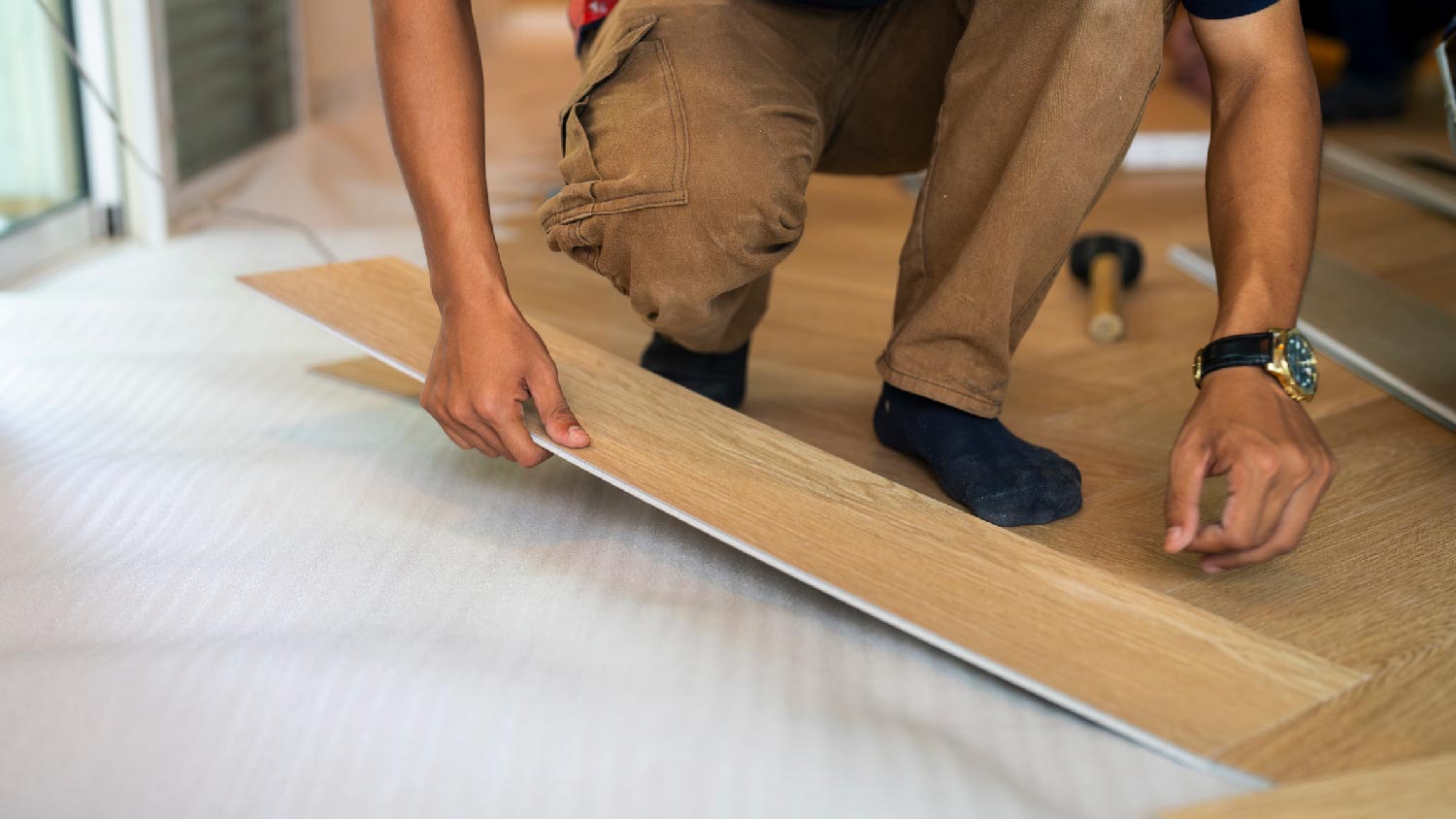
Laminate plank flooring is a type of synthetic composite flooring that resembles wood or stone. It's similar to luxury vinyl plank in that it comes in interlocking planks or peel-and-stick tiles. No adhesive or nails are necessary. Laminate planks require an underlayment, but you can install this flooring with minimal tools including a utility knife and speed square. Laminate flooring costs $3 to $13 per square foot.
| Pros | Cons |
|---|---|
| Easy to install with a few tools | More susceptible to water damage than LVP and LVT |
| Available in many colors and styles | Not ideal for wet areas like bathrooms and kitchens |
| Durable, long-lasting | Not as easy to clean as LVP or LVT |
| Can look more natural than LVP |
Best for: Dining rooms, living rooms, bedrooms, and home offices
4. Cork
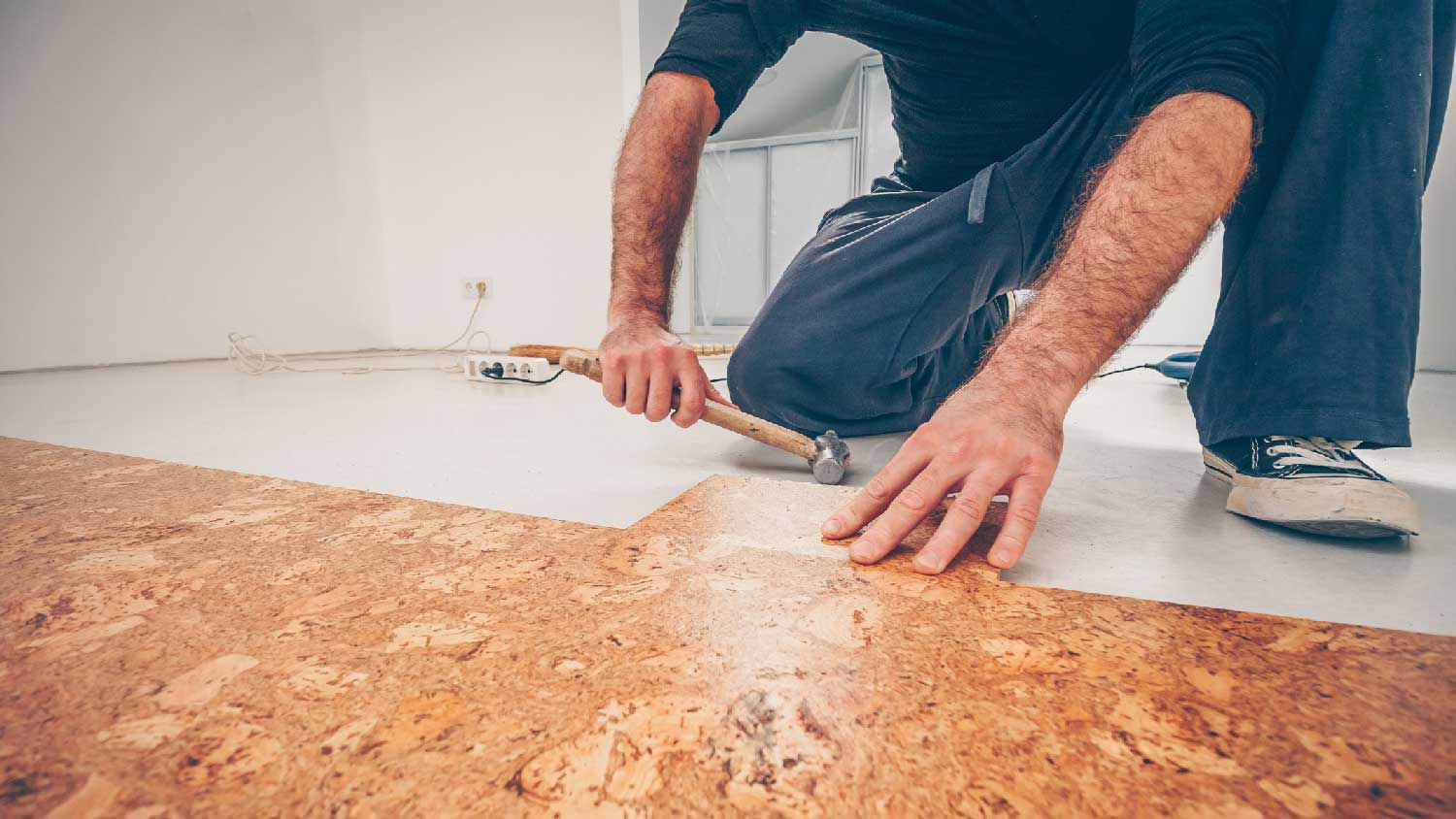
Cork flooring is bonded ground cork mixed with resins, and it comes in planks, sheets, or tiles. You can install cork flooring by snapping the pieces together or using the adhesive backing without glue or nails. You’ll need a few tools for installation, such as a straight edge and a razor blade. Cork flooring is eco-friendly, hypoallergenic, and soft. The cost of cork flooring ranges from $3 to $10.50 per square foot. Before opting for this flooring, learn about the pros and cons of cork flooring.
| Pros | Cons |
|---|---|
| Hypoallergenic and eco-friendly | Not as durable as LVP, LVT, or hardwood |
| Soft and comfortable underfoot | Not as resistant to stains |
| Easy to install with a few tools | Can get divots from heavy furniture |
| Adds thermal and acoustic insulation | Occasionally needs resealing |
Best for: Bedrooms, playrooms, and living rooms without extensive traffic
5. Carpet Tiles
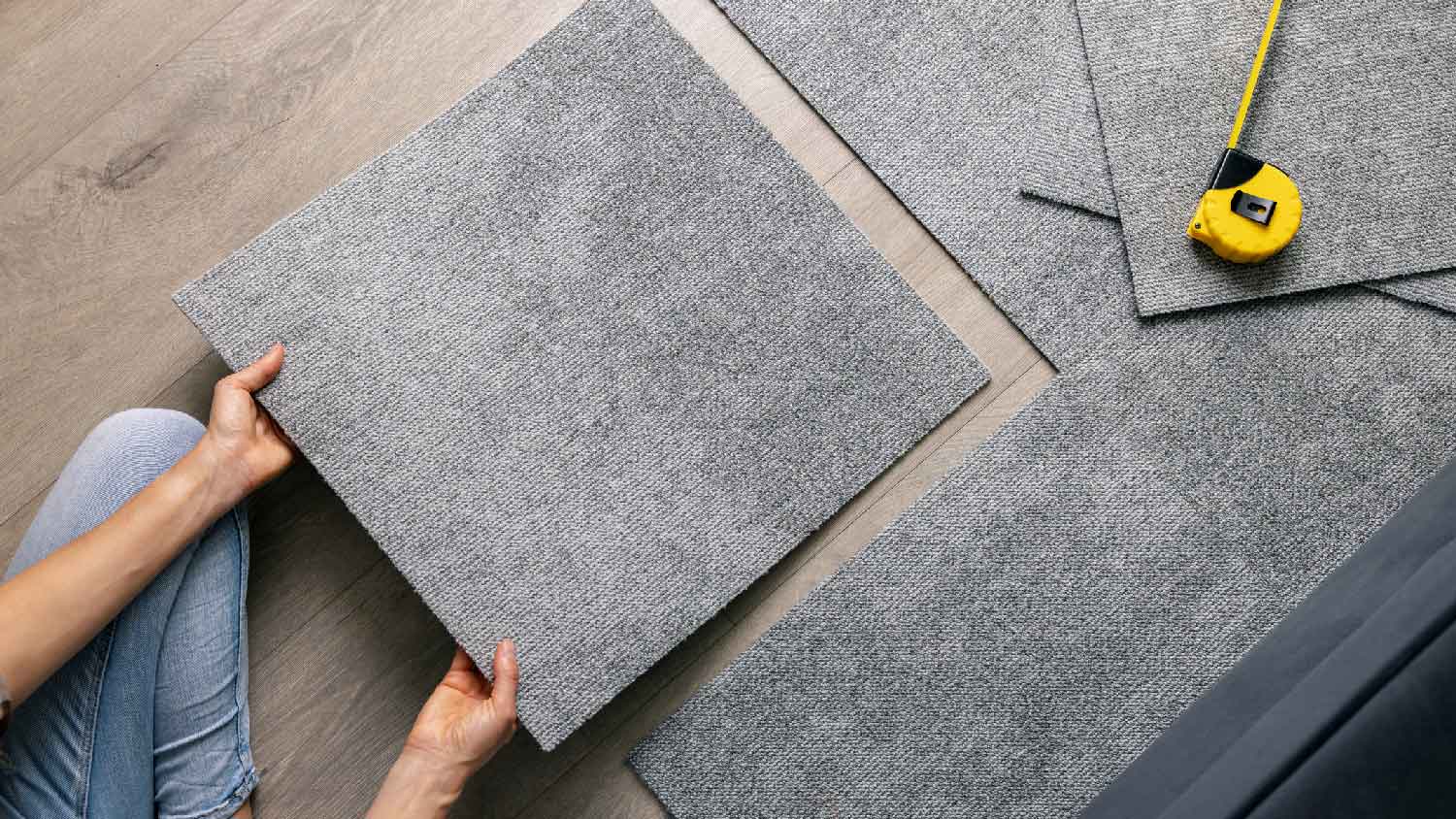
Carpet tiles are square pieces of carpet that are peel-and-stick or secured with double-sided carpet tape. Carpet tiles are much easier to install than standard broadloom carpet. You only need a few tools for installation, such as a utility knife and a straight edge. If you're installing a pattern, you'll need to pay close attention to how the squares line up. Carpet tiles come in a range of colors, styles, and patterns. The cost of carpet tiles ranges from $1.50 to $3.50 per square foot depending on the type of carpet, although most carpet tiles are low-pile.
| Pros | Cons |
|---|---|
| Easy to install with a few tools | Can show wear at the seams |
| Versatile | Can look more commercial than residential |
| Durable and easy to clean | Getting squares to line up can be fussy |
| Available in many colors and styles | Not as durable as standard carpet |
Best for: Living rooms, bedrooms, playrooms, and family rooms
Choosing the Easiest Floor to Install
All five options on our list are the easiest types of flooring to install, even if you only have beginner or intermediate DIY skills. When deciding on a type of flooring, consider the following aspects.
Look and Feel
LVP flooring mimics hardwood, while LVT mimics stone or tile. Laminate can resemble hardwood or tile. Cork is softer and has a more natural feel, while carpet tiles offer a plush option. Think about your space and what type of aesthetic you want when choosing your flooring.
Longevity and Durability
LVP and LVT last the longest and are the easiest to maintain. Cork is more prone to damage, and carpet tiles can show wear and seams. Laminate is long-lasting but isn’t as resistant to water damage as LVP and LVT.
Budget
The cost of flooring installation depends primarily on the product, ranging from $1.50 per square foot for simple carpet tiles to $13 per square foot for high-end laminate planks. While the initial budget of your project is essential, consider the durability and lifespan of the products to ensure you’re making a good long-term decision.
Type of Room
If you’re redoing the floor in a playroom or bedroom, LVP or carpet tiles are likely your best choice. If you want to upgrade your kitchen or bathroom floor, LVP or LVT are the most durable options. For your living room or dining room, consider LVP or laminate.
If you’re renovating an intricate bathroom or redoing an entire main floor, consider hiring a local flooring company for installation. They’ll ensure a smooth, level floor that lasts for decades.

.jpg?impolicy=leadImage)

